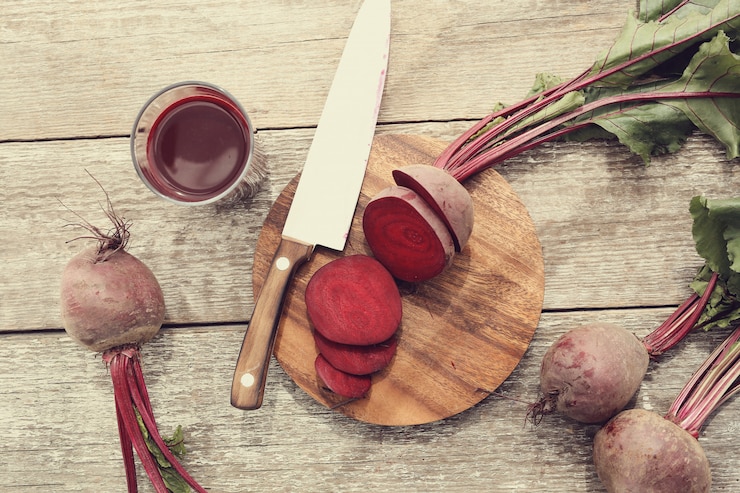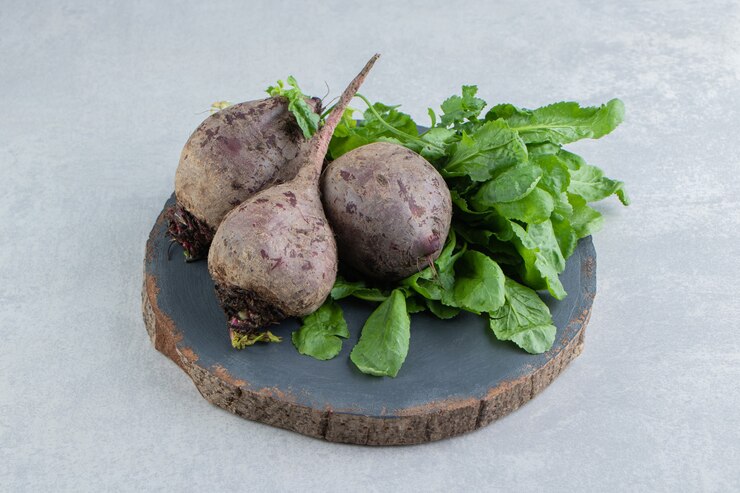The shelf life of all fresh fruits and vegetables is limited. Learn the signs that your beets have gone wrong to enjoy the health benefits, great taste, and flavor of beets. There are a variety of indicators that beets have gone wrong, including smell, taste, texture, and mold growth. It’s easy to tell because of the smell or appearance, as it is with most vegetables. Beets are root vegetables that follow the same guidelines as carrots. If you’ve been stockpiling beets and aren’t sure what to look for when they start to go wrong, this article is for you. Use these pointers to keep an eye out for the next beet sale and save money.

Beetroot
Beetroot (Beta vulgaris) is a root vegetable known as red beet, table beet, garden beet, or simply beet. Fiber, folate (vitamin B9), manganese, potassium, iron, and vitamin C, among other minerals, are abundant in beets. Beets and beet juice have been linked to various health benefits, including improved blood flow, blood pressure reduction, and exercise performance. Several of these benefits are due to the high amount of inorganic nitrates. Beets are delicious raw, but they’re usually cooked or pickled. Beet greens, as well as beet leaves, can be eaten.
Beetroot is available in various colors, including yellow, white, pink, and dark purple. Beetroot contains approximately 8–10% carbohydrates, whether raw or cooked. Simple sugars like glucose and fructose account for 70% and 80% of the carbohydrates in raw and cooked beetroots. FODMAPs, or fructans, are short-chain carbohydrates found in beets. FODMAPs are challenging to digest for some people, resulting in unpleasant digestive symptoms. Beetroots have a glycemic index (GI) of 61, which is considered medium. The glycemic index (GI) is a metric that measures how quickly blood sugar levels rise after eating.
How to Tell if Beet is Bad?
It’s good to see that your beets have gone wrong before you buy or even cook them.
Smell
When beets are fresh, they have a distinct “earthy” aroma. If you’ve ever smelled beets, you’ll recognize an earthy smell, though it’s difficult to describe. When beets go wrong, they don’t always smell rotten, but they have an unpleasant odor. Trust your keen sense of smell and your instincts. Throw them away if the odor is too strong. It can be challenging to judge freshness solely based on smell, but the smell will suffice in some cases. It takes a while to get used to the fresh earthy scent. Beets don’t always smell rotten when they’re entirely rotten, but an unpleasant odor is enough to make you throw out that beet.
Mold
People say you can cut off the moldy parts of your fruits and vegetables and use the rest if you find mold in them. The problem is that the fungus has spread its toxins throughout the beets, not just the visible parts. In this case, throwing away the entire beet would be the best option. There is always a debate about foods that have developed mold. The fungus doesn’t just affect the visible surface. The spores and toxins are usually all over your vegetable when you notice them anywhere.
Texture
Beets are firm when they’re new but look for bruising if they’ve become wrinkly. Beets can become wrinkled due to a lack of moisture. If the beets’ coat has become soft, it’s time to discard them. Beetroots, like carrots, are very firm when they are young. Because beets and carrots are both root vegetables, I like to compare them. When carrots are young, they are firm, but when they become wrinkly, something is wrong. Also, look for bruising. Some wrinkling is caused by a lack of moisture, while further wrinkling indicates a problem with the beets. Throw them out if they start to wrinkle. Although beets have a soft coat, they should be as firm as a tennis ball when fresh. The beet has likely gone wrong if it’s as soft as a tomato.
Taste
People occasionally have the misfortune of a beet going bad too soon, and it’s reasonable to assume it had something to do with their beet storage. Take the bad one out of the fridge after a few days of storage and chew on it. It’s terrible if it’s bitter and dry, with no hint of the sweet and mellow flavor that a good beet should have.
How to Store Beets?
If beets aren’t stored properly, they won’t stay fresh for long. Here are steps to follow to ensure your beets last the longest.
- Remove the greens and stems to prevent absorbing moisture from the root. The beets can stay fresh in the fridge for 2-4 weeks.
- Cut off the stem, leaving about 1-inch, and then place them in an airtight plastic bag.
- Please don’t wash the beets because water can cause them to go wrong.
- When cooking beets, don’t peel or cut them before putting them in the fridge.
- Once beets get cooked, the skin peels off. And, if you peel them, the color will spill into the boiling water, and the beets will turn brown.
What is the Shelf Life of Beets?
Raw beets last for about two weeks when stored correctly in the fridge at or below 40 degrees Fahrenheit. To prevent water loss, place the fresh raw beets in a plastic zipper bag and store them in the fridge. If stored in a cool, dry, and dark corner of the pantry away from direct sunlight and heat, raw fresh beets will last for about 3-5 days.
It’s worth noting that beets should be stored in a well-ventilated area and never in a humid environment, as excessive moisture can wreak havoc on the quality and freshness of the beet.
On the other hand, Cooked beets can be stored in an airtight container at or below 40 degrees Fahrenheit for about 3-5 days. It’s worth noting that these figures only represent the beets’ estimated shelf-life; beets can last much longer if properly stored.
Can you Freeze Beets?
Yes, beets can be frozen, and beets that are appropriately stored in plastic freezer bags have a longer shelf life, lasting 12 to 18 months. So, to properly store beets in the freezer, wash them thoroughly and then trim them so that only 12 inches of stem remains. Cook the beets until they are tender, about 15 minutes. Allow them to cool before peeling and cutting them into cubes or wedges. Fill a plastic freezer bag halfway with the cut beets. It’s best to keep it in the freezer.
Conclusion
If your beets show signs of mold or rot, they should be discarded. A quick inspection can detect any gross fluffy mold appearing on the tough skin. This is a sure sign that it’s time to get rid of your beets. Second, beets should be firm to the touch, with an old beet gradually softening before shriveling up. Squeeze your beets to see if the flesh has any give to it; if it does, your beets are sour.
A way to tell if beet is terrible is to smell it. You’re familiar with and enjoy the earthy beet flavor, and you should be able to smell a fresh beet easily. When a beet loses its distinctive earthy odor, it’s time to let it go. If cooked beets were contaminated before you prepped for refrigeration, they would spoil within two days. Always check the contents of the container before you dig in. Refrigerate your beets in a ventilated bag in the veggie drawer. Trim the greens before putting them in there. Cooked beets and any leftovers should be stored in an airtight container in the refrigerator.

